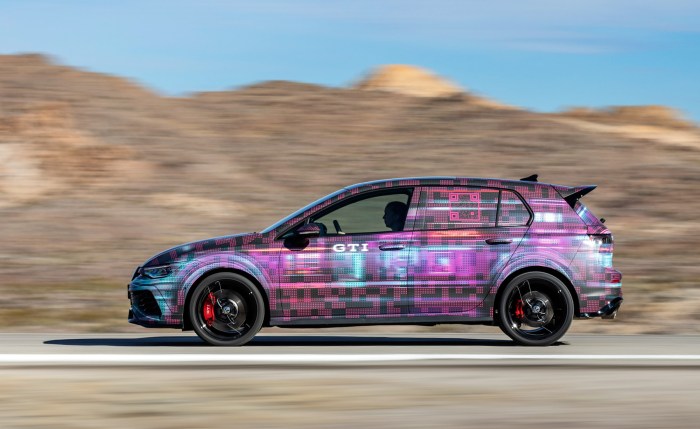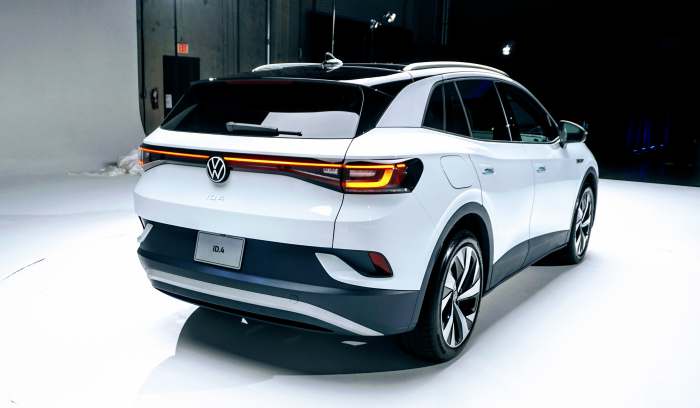The Volkswagen e-Golf, while no longer in production, serves as a valuable benchmark when considering the evolution of electric vehicles. Understanding its strengths and weaknesses in comparison to its 2025 competitors provides crucial context for prospective EV buyers. This detailed comparison explores key aspects, helping you make an informed decision if you’re considering a used e-Golf or exploring similar options in the current market.
Performance and Range: e-Golf’s Legacy and Modern Rivals
The e-Golf, with its relatively modest range and power output compared to modern EVs, highlights the rapid advancements in battery technology and electric motor design. While it offered a decent range for its time (around 125 miles on a single charge), 2025 EVs boast significantly extended ranges, often exceeding 250 miles and even reaching over 400 miles on a single charge, depending on the model and battery pack size.
This is largely due to improvements in battery density and energy efficiency.

Source: carscoops.com
Range Anxiety: Then and Now
Range anxiety, a significant concern for early EV adopters, is considerably mitigated in 2025. The increased range of newer EVs, coupled with the expanding network of fast-charging stations, significantly reduces the limitations imposed by limited battery capacity. The e-Golf’s limited range necessitated careful trip planning, a constraint largely overcome by contemporary electric vehicles.

Source: carscoops.com
Acceleration and Handling: A Shifting Landscape
While the e-Golf offered respectable acceleration for its era, 2025 models frequently boast significantly quicker 0-60 mph times. The advancements in electric motor technology have led to increased power and torque, resulting in a more exhilarating driving experience. Handling characteristics also vary, with many newer EVs offering advanced features like regenerative braking and all-wheel drive for enhanced control and efficiency.
The e-Golf, being a smaller hatchback, offered nimble handling, a trait shared by some but not all modern competitors.
Charging and Infrastructure: A World Transformed
The charging infrastructure has undergone a dramatic transformation since the e-Golf’s heyday. While charging speeds were a significant limitation for early EVs, the proliferation of fast-charging stations supporting higher charging rates (e.g., 150 kW, 350 kW) drastically reduces charging times. Many 2025 EVs are designed to take advantage of these faster charging speeds, significantly reducing the time spent at charging stations compared to the e-Golf’s slower charging capabilities.
Home Charging: Convenience and Accessibility
Home charging remains a key convenience factor. The availability of home charging units and their compatibility with various EV models has significantly improved. While the e-Golf was compatible with standard home charging, many 2025 EVs offer advanced charging features and faster home charging options, further enhancing the user experience.
Technology and Features: A Quantum Leap Forward
The technological advancements in the automotive sector are most evident in the comparison between the e-Golf and its 2025 counterparts. Modern EVs boast advanced driver-assistance systems (ADAS), sophisticated infotainment systems with large touchscreens, over-the-air updates, and seamless smartphone integration. These features were largely absent or rudimentary in the e-Golf.
Infotainment and Connectivity: A Seamless Digital Experience
The e-Golf’s infotainment system, while functional, pales in comparison to the sophisticated systems found in 2025 EVs. Modern vehicles often feature intuitive interfaces, advanced navigation systems with real-time traffic updates, and comprehensive smartphone integration through Apple CarPlay and Android Auto. Voice control and other advanced features are now commonplace.
Safety Features: Enhanced Protection and Assistance
2025 EVs often incorporate a suite of advanced safety features, including automatic emergency braking, lane-keeping assist, adaptive cruise control, blind-spot monitoring, and more. While the e-Golf offered some basic safety features, the level of sophistication and the range of available features in modern EVs represent a substantial improvement.
Price and Value: Balancing Cost and Features
The price of electric vehicles has decreased significantly over time, making them more accessible to a wider range of consumers. While the e-Golf offered a relatively competitive price point for its time, the cost of comparable 2025 EVs varies considerably depending on features, range, and brand. It’s crucial to consider the total cost of ownership, including factors like maintenance, insurance, and electricity costs, when comparing vehicles.
Used e-Golf vs. New EVs: A Cost-Benefit Analysis
The used e-Golf market offers a potentially affordable entry point into electric vehicle ownership. However, it’s essential to weigh the lower purchase price against the limited range, older technology, and potential maintenance costs. Comparing the total cost of ownership with a new, more modern EV is crucial to determine the best value proposition.
Choosing the Right Electric Vehicle for You in 2025
The evolution of electric vehicles has been remarkable. While the e-Golf served as a significant step in the transition to electric mobility, 2025 offers a diverse range of EVs with superior range, performance, technology, and safety features. The best choice depends on individual needs, budget, and priorities. Consider factors such as desired range, charging infrastructure access, preferred features, and overall budget when making your decision.
Frequently Asked Questions (FAQ)
- Q: Is the VW e-Golf still being manufactured? A: No, the VW e-Golf is no longer in production.
- Q: What are the main advantages of newer EVs compared to the e-Golf? A: Newer EVs generally offer significantly longer ranges, faster charging times, more advanced technology (infotainment, safety features), and better performance.
- Q: What are the disadvantages of buying a used e-Golf in 2025? A: A used e-Golf will have a shorter range, older technology, and potentially higher maintenance costs compared to a new EV.
- Q: How much does a used VW e-Golf cost? A: The price varies depending on the year, condition, and mileage. Checking online used car marketplaces will provide a current market overview.
- Q: What are some popular 2025 electric vehicle alternatives to consider? A: Popular options include the Tesla Model 3, Hyundai Ioniq 5, Kia EV6, Chevrolet Bolt, and many others, depending on your budget and preferences.
References
- Volkswagen Official Website (for historical information on the e-Golf)
- EPA FuelEconomy.gov (for fuel efficiency and range comparisons)
- [Add links to reputable automotive review sites and EV comparison websites]
Call to Action
Ready to explore the exciting world of electric vehicles? Research the latest models and find the perfect fit for your lifestyle and budget. Start your search today and experience the future of driving!
Frequently Asked Questions
Will the VW e-Golf still be produced in 2025?
Production of the VW e-Golf has ended. This comparison focuses on its legacy and how it stacks up against newer models available in 2025.
What are the major technological advancements expected in electric vehicles by 2025?

Source: subminimal.org
Expect improvements in battery technology leading to increased range and faster charging, along with advancements in autonomous driving features and in-car infotainment systems.
How will government incentives affect the e-Golf’s competitiveness?
Government incentives vary by region and are subject to change. These incentives can significantly alter the overall cost and appeal of electric vehicles, including the e-Golf (or its lack thereof).
